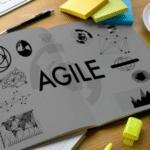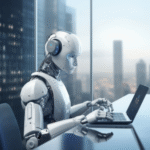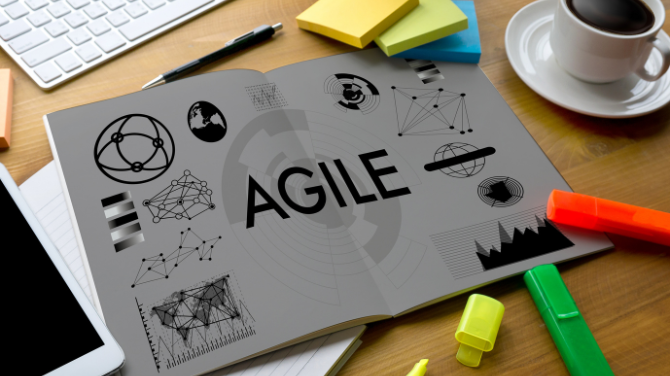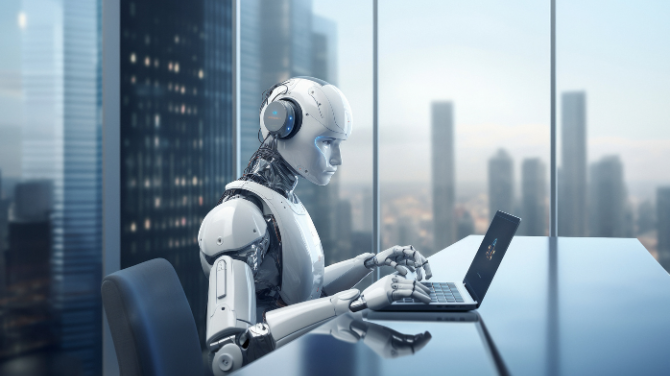What Happens When the Technologies Merge? AI and Blockchain
Blockchain and AI are driving technology innovation worldwide and both have profound implications for the future.
As per definition, blockchain is “an open, distributed ledger that can record transactions between two parties efficiently and in a verifiable and permanent way.”
Having no central authority, the blockchain network is what makes up for a democratized system. Anyone and everyone is(Are) open to see the information in it since it is a shared and immutable ledger record. All that is built on the blockchain thereby is transparent by nature and whoever is involved is accountable for their actions.
Techopedia explains Artificial intelligence as a branch of computer science that aims to create intelligent machines.
The core of AI is Knowledge Engineering and Machine Learning. Having access to objects, categories, properties and the relations between them helps AI to implement knowledge engineering. On having abundant information relating to the world, machines can often act and react like humans.
Another major field related to AI is Robotics, requiring intelligence to handle object manipulation and navigation, along with sub-problems of localization, motion planning and mapping.
Advantages of blockchain
Blockchain is proven to disrupt and transform traditional business models, pushing businesses towards achievements like significant benefits, including greater transparency, enhanced security, improved traceability, increased efficiency and speed of transactions, and reduced costs. Let us see how.
Greater transparency
We know by now blockchain is a type of distributed ledger where all network participants share the same documentation as opposed to individual copies. A shared version means it can only be updated through consensus, where everyone must agree on it. Eg – Transaction histories. Thus, data on a blockchain is more accurate, consistent and transparent.
Enhanced security
In industries where protecting sensitive data is crucial, like financial services, government and healthcare, fraud and unauthorized activity can be prevented by using blockchain technology. Compromising transaction data by hackers is difficult for hackers as information is stored across a network of computers instead of on a single server.
Improved traceability
Tracing an item back to its origin can be a task and who understands this better than someone who has traded through complex supply chains. On the blockchain, exchange of goods are recorded and an audit trail is made to show the asset’s origin and every stop it made. This data helps verify asset authenticity and prevent fraud.
Increased efficiency and speed
Blockchain streamlines and automates trading related processes for transactions to be completed faster and with much more efficiency. Records are kept using a single digital ledger and shared among all participants, leading to less clutter and more trust among participants since everyone has the same information.
Reduced costs
Most businesses work towards reducing costs. With blockchain, the trust factor lies with your data and not your trading partner, thus eliminating third parties or middlemen to make guarantees.
Benefits of AI
AI today is popularly known as narrow or weak AI since it is designed to perform narrow tasks like face recognition, car driving or internet search assist. However, the long-term goal of AI is to perform more complex tasks such that it can outperform humans in nearly every cognitive task like solving an equation or playing chess. The benefits of AI therefore are:
Enhanced Automation
AI technologies like ML and deep learning reduce the workload of humans thus reducing operation and manpower cost substantially. AI is capable of performing intensive human labour without the need for human intervention, automating tasks in industries and other sectors.
Eliminates the Necessity for Humans to Perform Tedious Tasks
Introducing AI gives humans more time to look at the humane aspect of their lives like creative and interpersonal, leaving machines to take care of the cumbersome task. Financial institutions are one such sector taking complete advantage of this technology, making banking quicker and easier for consumer and life more relaxed for the agents.
Smart Weather Forecasting
The collaboration between data scientists and climate scientists has made the field of Climate Informatics blossom. This collaboration has come up with tools to observe and analyze increasingly complex climate data, giving the man a much-needed insight into extreme climatic events such that possible disasters and natural hazards can be made aware of and precautions taken in the form of smart disaster responses.
The Perfect Marriage of Creativity and Technology
AI can be thought of like a robotic machine having the ability to think intelligently and creatively and translate these thoughts autonomously in varied human applications. Using AI, brands can apply the correct technology to market themselves and align with the needs and wishes of Gen Z.
Zero Scope for Errors
AI makes for an error-free life. Human error is a natural phenomena and industries always have to leave ample room for it when it comes to manual human labour centric work. It puts hurdles in the road to innovations, scientific studies and technological advancements. It is about time we invest in AI for a high level of precision and accuracy, and save time in the long run.
Collaboration between AI and Blockchain
Blockchain and artificial intelligence are known for driving technological innovation worldwide. Both of these have profound implications for the future of business and our personal data. Here is how the two technologies can merge or collaborate.
Data protection
AI gathers data about human interactions and uses the same to improve itself through machine learning. Blockchain is a secured and protected database accessible only by authorized users that encrypts data storage on a decentralized system. Integration of the two means a decentralised AI system for sensitive data.
Ensuring security
AI is centralised and running on a single processor, making it easier for hackers or malware to infiltrate an AI system and alter its instructions. On the blockchain, any information must pass through several nodes or phases of the network on the system for being processed. The more nodes, the more difficult it is to hack, making a blockchain-based, decentralized AI platform a tough nut to crack.
Trustworthiness
Blockchain is a more transparent technology than a closed AI system. It protects data through encryption. However, AI brings storage possibilities and an intersection between the two will make it easier to access unstructured data while keeping it secure.
Where could AI and Blockchain Intersect?
Hospitals
It is not rare for patients to not want their medical information to be accessible by any unauthorized viewers. This information when kept on the blockchain can be encrypted to prevent unauthorized access while allowing healthcare providers easy access to patient files for emergencies. With added Artificial Intelligence, the increased storage will make it easier to access unstructured data.
Cyber Security
Using AI and blockchain together makes way for an extra guard against cyber attacks. Real-time theft detection can be done using automated AI with vulnerabilities in decentralized databases being taken care of by blockchains.
Self-Driving Cars
Self-drive cars are the next big thing. However, it will not be accessible to all due to its affordability. In such cases, these self driven cars can be given on lease. Using blockchain technology will make the leasing process simple by reducing the number of people involved, providing audit trails and syncing data.
Challenges with the Integration of AI and Blockchain
- Blockchain infrastructure is decentralised and it’s nodes are heterogeneous in nature. Making the blockchain public and open-source will make it almost impossible for ML outputs to come at as a single point.
- AI consumes enormous amounts of data, and the database formed by blockchain cannot be scaled to consume that amount of data, making integration challenging for the two.
- There have been instances where Artificial Intelligence has failed and Its decentralisation could lead to uncontrollable damage. For example, self-driving cars that cannot decode a red light.
Blockchain and AI Convergence – Use Cases
SingularityNET
Creating a decentralised open market for AI, SingularityNET enables monetising AI to enable companies, organizations and developers to buy and sell AI algorithms at scale, increasing AI capabilities. It makes the use of blockchain and AI for the data repository.
Sophia
World famous robot Sophia, developed by Hanson Robotics, is taking machine intelligence to another level. Sophia has been wired to manually manage information and determine her responses and interactions. She uses multiple AI modules to take her actions emphatically.
Namahe AI – Supply Chain
Aiming to bring in transparency and connect the various elements of value chains, Namahe AI monitors the supply chain process in real-time and reports anomalies, delays and frauds in the system and flags such data so authorities can review it. It leaves less scope for any misuse. Namahe AI will further deploy ML that will allow AI to predict future markets and anomalies.
Numerai Hedge Funds
Numerai Hedge Funds are using blockchain infrastructure to let scientists around the world contribute to ML algorithms, letting their AI be open to data scientists.
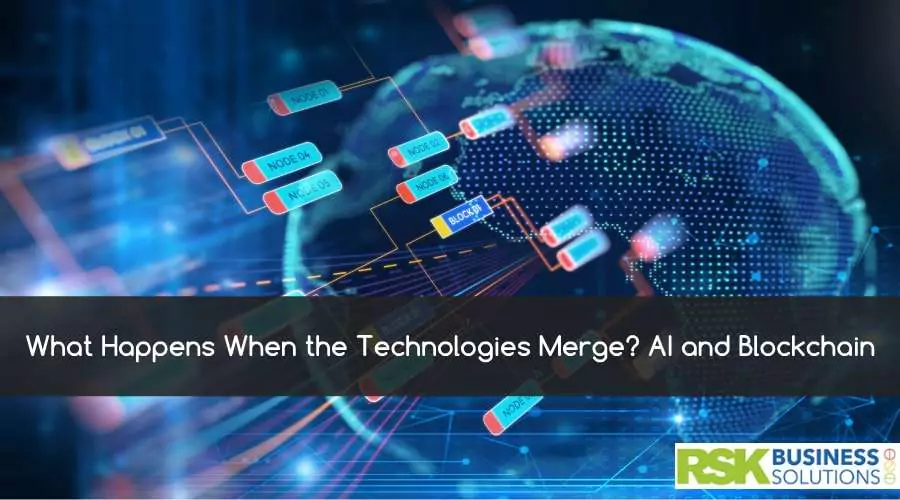

 Share
Share Post
Post Tweet
Tweet Copy
Copy

